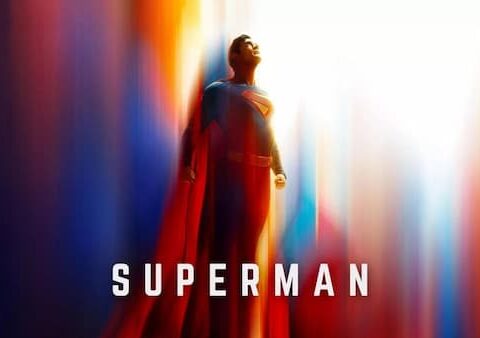One of the things I looked forward to when the DC Rebirth was announced was the chance to have a go at getting back into the Green Lantern mythology, having been in the wilderness for a very long time.
In fact I hadn’t read any Green Lantern comics since I was a teenager in the mid-90s. Having intended to reconnect with the Green Lantern franchise for years, the circumstances had simply never properly aligned for me to do so.
But now was my chance and I took it.
I was also reading the Green Lanterns (Simon Boaz and Jessica Cruz) title in conjunction with this and quite enjoying that too; though the two titles don’t really link up and I haven’t gotten around to writing up a review for that one.
They’re very different books though. And while that other series is probably more fun for casual reading, this Hal Jordan title is definitely the one you want for serious mythology and high stakes.
The tone and set-up of this reimagined cosmos is reminiscent of a the classic Dystopian, Age of Apocalypse style vision. Reading Hal Jordan & the Green Lantern Corps Rebirth #1, those were the associations that immediately came to mind – that sense of a world (in X-Men‘s case) or a universe (in this case) that has gone completely wrong.
A universe where the bad guys won and got to enact their vision. A universe deprived of light and without hope.
HJ&TGLC #1 establishes that atmosphere and feeling very effectively, opening with the debris remains of the planet Oa and quickly showing us the oppressive Warworld, where we meet an elderly looking Sinestro, who we quickly learn is supreme ruler over the galaxy.
Most of Rebirth #1 centers on the consciousness of Hal Jordan and his inner thoughts as he tries to piece himself back together. This sequence is rich in Green Lantern lore; for hardcore fans, it acts as a reimagining or even reaffirmation of established mythology, while for anyone jumping in as a newcomer it provides a valuable breadth of mythic context and the broader sense of who Hal Jordan is and who he is supposed to be, as well as what the Green Lanterns are supposed to be.
Where Rebirth #1 acts as an intro or extended prologue, Hal Jordan & the Green Lantern Corps #1 properly gets the story moving with ‘Sinestro’s Law, Part 1’.
And without doubt, the most engaging thing here is Sinestro, much more so than Hal or the Green Lanterns.
What we get here, at least in these early parts of the story, is not simply a textbook evil villain drunk on power; but an all-powerful ruler who actually cares about what he has built, believes in the need to maintain order and, at moments, almost seems reluctantly resigned to the burden of responsibility that comes with being supreme ruler.

None of this makes him a sympathetic character at all, but it does make him much more interesting. We also, crucially, get the hints here that the Sinestro Corps is actually perceived to have done some good in the galaxy (primarily, perhaps, via Sinestro’s daughter, Soranik) and isn’t therefore simply an evil, destructive force.
While I cited the Age of Apocalypse echoes earlier, what was also evoked very much here for me – particularly in regard to Sinestro – was Doctor Doom and the Secret Wars. That was, for that matter, a story I absolutely adored. When citing these comparisons or echoes, I’m not making any claim of plagiarism or anything like that, merely highlighting similarities.
It doesn’t bother me, at any rate – comics are generally pretty incestuous and tend to mirror each other all the time. In the end, what really matters is quality level.
And this series establishes very early a very good quality level.
What I like here, however, is how Sinestro’s order is presented like a classic, fascist dictatorship – most fascism regimes are, at some point, regarded as having brought or ‘restored’ order or as having done some degree of good. And most such regimes, even as they rise to greater levels of tyranny, still have their supporters and advocates, who are almost blinded to the ills of said regime on account of the perceived good they think the regime has done in the past.
There is very much some sense of that here. Sinestro himself is, of course, depicted in blatant Hitler fashion, with the moustache and the Hitler haircut.
The point here where Sinestro appears to go from mere dictator to full-on evil supervillain is when he demands the Parallax entity imbue him with full, ultimate power levels.
HJ&TGLC #2 expands more on this, with the freshly rejuvenated Sinestro explaining to his daughter that he has basically been using her this whole time: knowing that her better nature and good intentions would help soften the image of Sinestro and make the Sinestro Corps more palatable to the galaxy.
All the while he had been biding his time, appearing as a weak, enfeebled old man but knowing that he could go to the Parallax entity at any time and be replenished.
In essence, Soranik is the light-side, well meaning element of his ’empire’, while Sinestro – the all-powerful father – is the domineering tyrant that was there all along, waiting for his moment: not merely to undo the good, but to reveal that good to be the sham tool it always was.
Needless to say, it’s this materal – the Sinestro/Soranik stuff – that is the most engaging here. And, again, a lot of this also seems to be channeling or filtering some of what’s going on in real-world, contemporary politics and soceity too, as a number of major comic books are presently doing. It’s hard not to see that – particularly when Sinestro talks about his empire built on ‘fear’, but more specifically the utilisation of people’s fears.
We’re told that the Sinestro Corps in fact filled the void left by the Green Lanterns when they vanished from the galaxy and were, to some extent, seen as necessary saviours who did what needed to be done.
HJ&TGLC #3 does a good job of showing us how the Sinestro Corps had become so accepted as a force for good (or at least as not an outright force for evil) that citizens of various planets are actually shocked or dismayed at their evil rampages now.
There is a Star Wars style ‘Order 66’ feel to some of this, as we see people on various worlds and societies coming under attack from the Sinestro Corps and not understanding why they’re being assaulted or how the Corps could’ve turned on them like this.
There is a genuine element of tragedy to this that the artists effectively captured and convey in these sequences.
Visually, this book is a pleasure garden for the eyes. Tomeli Morey’s colors in particular are so vivid and alive that I find myself almost shielding my eyes at his depictions of, for example, bright light. His greens are also suitably rich, as is probably obligatory in a title where there’s always going to be a lot of green. But these epic settings are visualised with suitable scope and flourish.
Warworld and Sinestro’s scenes are particularly richly presented, aiding the sense of fascination.
This story, as it unfolds, effectively taps into all those human fears about tyranny and about evil regimes, but also more so about saviour figures who are able to manipulate societies into embracing or accepting their rule, only to later show their true face and true colors – at a point where their many subjects realise that they’ve given their trust and support to a monster, it is of course too late to do anything about it.
This also, essentially, taps into the apocalyptic, Anti-Christ paradigms too and the modern ‘New World Order’ obsessions, though not in a tired, cliched fashion. There’s echoes of Palpatine and the Sith here too, but, again, not cliched or plagiaristic – but universal, timeless ideas re-processed through the specific filters of Green Lantern mythology and lore.
We’re even shown Sinestro ‘allowing’ religious orders to reestablish themselves, but only to exist at his pleasure; he specifically says that he finds religions “useful”, but only so long as they don’t interfere with or contradict his supreme authority.

This entire story, it seems to me, plays on some our most deep-seated fears and preoccupations as modern societies in contemporary times – specifically, fears of losing our democracies, our liberal, modern societies and values, and fears of a tyranny based on fear. It is part of why there are so many conspiracy theorists scrutinising government and power so closely and – at times – in such paranoid fashion.
HJ&TGLC #4 gives us the most blatant, obvious Hitler allusions yet, with an opening page of a brooding Sinestro looking more like the Fuhrer than ever before (complete with Hitler moustache and hairstyle), while being cheered on by Corps members.
There is no subtlety here; but none is needed.
Everything pushes on through HJ&TGLC #5 and #6, aligning us for the inevitable showdown between Hal Jordan and Sinestro in #7, as ‘Sinestro’s Law’ reaches its conclusion.
And, arguably and under other circumstances, this big showdown between the two arch rivals might seem like standard, even cliche-riddled, comic book fare.
Here, however, and with all the preceding stage-setting and storytelling being what it has been, it simply fits too well, thematically. It isn’t just a battle between two super-powers at the height of their respective strengths, but a battle of ideologies and personalities. Hal doesn’t just go to Warworld to defeat Sinestro, but to sacrifice himself in the process.
This confrontation between these two former-allies-turned-arch-enemies really gets to the core of the Hal Jordan/Green Lantern mythology, entirely reminiscent of, for example, Doctor Doom and Reed Richards in the Secret Wars finale. Sinestro’s offers (basically, ‘join me or die’) also put this showdown firmly into Luke/Vader territory too. Again, there’s nothing novel or original here, but it is nevertheless very well done.
It is all aided of course by solid, unfailing illustration and color, giving life to what feels genuinely like a fate-of-the-cosmos struggle between two figures whose shared destiny is to always be clashing with each other. Like Doom and Richard, Jordan and Sinestro almost feel like soul-mates, inextricably tied to each other for eternity.
This conflict on Warworld is left open-ended at the conclusion here to ‘Sinestro’s Law’ – with it being unclear what has become of either Hal or Sinestro. The matter is subsequently picked up in later issues, but for Hal Jordan & the Green Lantern Corps #7 and this ‘finale’ to the story, it is an unorthodox and rather bold writing choice.
Most long arcs of this kind would finish on a clear resolution or even a happy ending of sorts; but both are absent here, even though Sinestro’s Yellow Lanterns have been defeated at this point, thanks to Soranik’s intervention.
In all, these first seven chapters in this title hit the mark very well, providing rich mythology, engaging themes, strong atmosphere, high stakes and a great visual feat – all of it in abundance.
If you’re a long-time Green Lantern fan, this material is likely to satisfy you substantially; and if you’re someone looking for somewhere new and up-to-date to jump into the Green Lantern mythology, Hal Jordan & the Green Lantern Corps #1 – 7 provides a perfect opportunity that is likely to leave you wanting more.




